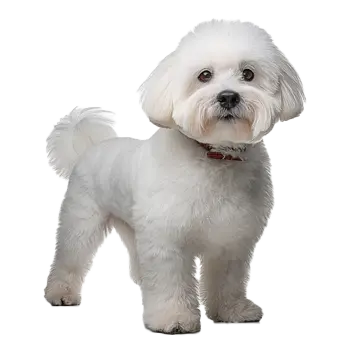The Bichon Frise is generally considered a healthy breed with an impressive lifespan of 14-15 years, and many individuals live even longer with proper care and preventive health measures. The breed benefits from responsible breeding practices over many generations, though like all purebred dogs, Bichons can be predisposed to certain genetic health conditions. Prospective owners should work with reputable breeders who conduct appropriate health testing on breeding dogs to minimize the risk of inherited conditions.
One of the most significant health concerns in Bichon Frises is patellar luxation, a condition where the kneecap dislocates or moves out of its normal position in the groove of the thigh bone. This orthopedic problem is common in small dog breeds and can range from mild cases that cause occasional limping to severe cases requiring surgical intervention. Dogs with patellar luxation may exhibit a skipping gait, hold up a leg periodically, or show reluctance to run or jump. Maintaining a healthy weight and providing appropriate exercise helps manage mild cases, while more severe cases may require surgical correction to prevent arthritis and chronic pain.
Dental disease is a major health issue for Bichon Frises and is actually one of the leading causes of health problems in the breed. Small dogs are particularly prone to dental problems due to crowding of teeth in their small mouths, which promotes plaque and tartar buildup. Without proper dental care, dogs can develop periodontal disease leading to painful infections, tooth loss, and bacteria entering the bloodstream that can damage the heart, kidneys, and liver. Daily teeth brushing with dog-specific toothpaste is ideal, though brushing several times weekly still provides significant benefits. Professional dental cleanings under anesthesia may be needed periodically to remove tartar and address any dental problems.
Bladder stones, particularly calcium oxalate stones, occur more frequently in Bichon Frises than in many other breeds. These stones form in the bladder and can cause painful urination, blood in the urine, frequent urination attempts, and potentially life-threatening blockages, especially in males. Symptoms include straining to urinate, increased frequency of urination, blood in the urine, or accidents in the house. Treatment may involve dietary management for certain types of stones, increased water intake, or surgical removal of stones. Some veterinarians recommend feeding Bichons prescription diets designed to prevent stone formation, especially if they have a history of bladder issues.
Allergies are relatively common in Bichon Frises and can manifest in several ways. Environmental allergies to pollen, dust mites, mold, or other allergens often cause itchy skin, scratching, paw licking, and ear infections. Food allergies can cause similar symptoms along with digestive upset. Flea allergy dermatitis can cause severe itching and skin problems even from a single flea bite. Identifying and managing allergies may require working with a veterinary dermatologist, implementing environmental controls, dietary trials, or immunotherapy treatments.
Heart disease, particularly mitral valve disease, becomes more common in Bichon Frises as they age. This condition involves deterioration of the heart valve that separates the left atrium and left ventricle, leading to blood flowing backward and the heart working less efficiently. Early signs may include coughing, especially at night or after exercise, reduced exercise tolerance, or difficulty breathing. Regular veterinary examinations that include listening to the heart can detect murmurs that may indicate valve problems, allowing for early intervention with medications that can slow disease progression.
Cataracts and other eye problems can affect Bichon Frises, particularly as they age. Cataracts cause cloudiness in the lens of the eye and can eventually lead to vision loss or blindness. Progressive retinal atrophy is a hereditary condition that causes gradual degeneration of the retina, eventually resulting in blindness. Responsible breeders have their dogs examined by veterinary ophthalmologists and avoid breeding dogs with hereditary eye conditions.
Preventive veterinary care is essential for maintaining a Bichon Frise's health throughout their life. Puppies require a series of vaccinations to protect against dangerous diseases including parvovirus, distemper, adenovirus, and rabies. Regular parasite prevention for fleas, ticks, and heartworms should be maintained year-round. Annual or biannual wellness examinations allow veterinarians to catch developing health problems early when they are most treatable. Senior Bichons, typically those over seven years old, benefit from twice-yearly checkups and bloodwork to monitor organ function and detect age-related conditions. Regular veterinary care helps ensure Bichon Frises live long, healthy, happy lives as beloved family companions.
Common Health Issues
- One of the most significant health concerns in Bichon Frises is patellar luxation, a condition where the kneecap dislocates or moves out of its normal position in the groove of the thigh bone.
- Dogs with patellar luxation may exhibit a skipping gait, hold up a leg periodically, or show reluctance to run or jump.
- Dental disease is a major health issue for Bichon Frises and is actually one of the leading causes of health problems in the breed.
- Allergies are relatively common in Bichon Frises and can manifest in several ways.
- Environmental allergies to pollen, dust mites, mold, or other allergens often cause itchy skin, scratching, paw licking, and ear infections.
- Food allergies can cause similar symptoms along with digestive upset.
Preventive Care & Health Monitoring
- Maintaining a healthy weight and providing appropriate exercise helps manage mild cases, while more severe cases may require surgical correction to prevent arthritis and chronic pain.
- Without proper dental care, dogs can develop periodontal disease leading to painful infections, tooth loss, and bacteria entering the bloodstream that can damage the heart, kidneys, and liver.
- Early signs may include coughing, especially at night or after exercise, reduced exercise tolerance, or difficulty breathing.
- Regular veterinary examinations that include listening to the heart can detect murmurs that may indicate valve problems, allowing for early intervention with medications that can slow disease progression.
Regular veterinary check-ups and preventive care are essential for maintaining your Bichon Frise's health and longevity.

